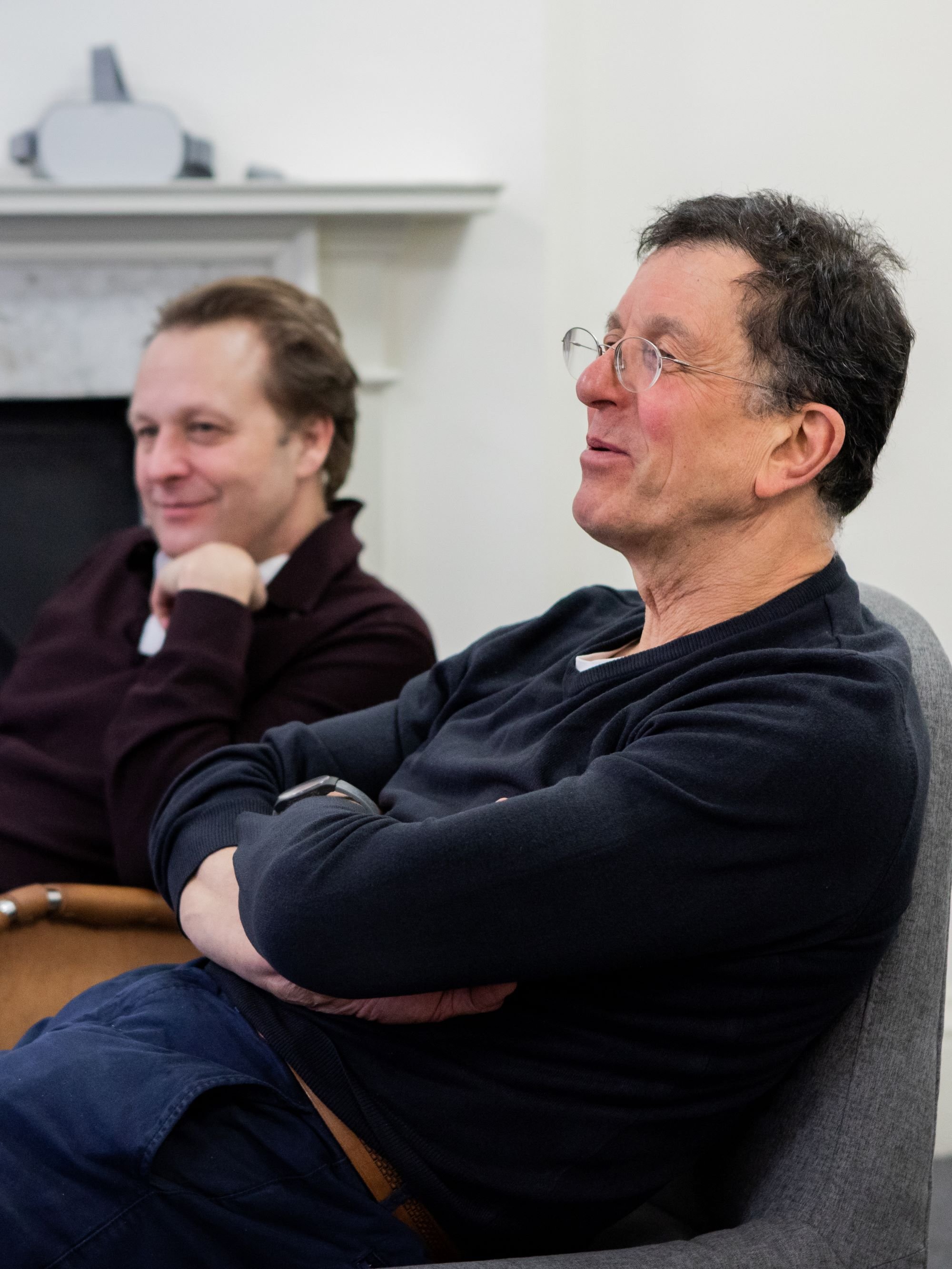
For a curator about to launch a major art-meets-science project, Daniel Birnbaum was remarkably relaxed this week. The former director of Stockholm’s Moderna Museet, Birnbaum is now head of mission control at Acute Art, a company that works with artists to produce high-tech, virtual reality works of art. Yesterday, April 4, he was on hand to usher in the firm’s latest project: Lunatick, a collaboration between sculptor Antony Gormley and astrophysicist Priyamvada Natarajan that allows viewers to travel from a Pacific island to the Moon and beyond. It opens to the public in London today, April 5.
“No one knows VR’s place in the art world,” Birnbaum tells artnet News. But Acute Art is trying to figure it out. The company has already worked with artists such as Marina Abramović, Olafur Eliasson, and Jeff Koons, whose VR debut, Phryne, is based on his own sculpture, the monumental Seated Ballerina last seen at the Rockefeller Center in New York.
Gormley’s Lunatick, on the other hand, is inspired by the moon as a work of art, Birnbaum explains. “He talks about its surface like a Rodin sculpture,” he says, adding that “Marcel Duchamp called the Woolworth Building a readymade. Antony is even more grand.” The curator also sees echos of Caspar David Friedrich’s moonlight paintings in Gormley’s VR project.
To ensure accuracy of experience, Natarajan, who teaches at Yale, has provided scientific knowledge, while NASA has handed over data to a group of Acute Art computer programmers who have transformed it into an eerily realistic recreation of the lunar surface. The total experience of getting to the moon takes 15 minutes. Spoiler alert: it’s a one way trip.
Antony Gormley, Lunatick (still). Courtesy of the artist and Acute Art.
Wearing only a VR headset, viewers can go where only 12 US astronauts have gone before. Bouncing across the lunar landscape in virtual zero gravity, you are more aware of its rugged beauty than you can be through any Hollywood movie or Discovery Channel documentary. “It’s as real as you can get it,” Birnbaum says.
The curator recalls seeing the first grainy images of a man on the moon in 1969. He grew up in Stockholm in a house where television was off limits. “I had to go to a friend’s house, which, of course, made TV all the more exciting,” Birnbaum says.
Speculating on the future of VR as an art form, Birnbaum compares it to video art in the 1960s—practically no one knew its potential either. He is amused by artists who already say they are interested in augmented or mixed reality. So will the market catch up? “The art market always finds a way. It always wins.” He thinks, however, that selling works in editions would be “a little conservative.” He also wonders which collectors will embrace the medium, speculating that someone like the German new-media collector Julia Stoschek might be an early adopter.
Collectors will be able to experience more of Acute Art’s collaborations at Frieze New York, where Birnbaum is organizing an exhibition titled “Electric.” It is scheduled to present Anish Kapoor’s gory VR debut Into Yourself, Fall and a piece by Rachel Rossin, in which the young artist has transformed a violent video game into a happy peaceful landscape.
Marina Abramovic, Rising (still). Courtesy of the artist and Acute Art.
VR will also make a splashy debut at the Venice Biennale in May, when Marina Abramović will present an eco-aware project about melting ice caps titled Rising. The work will be shown with a mixed-media installation entitled “Invasor” at Palazzo Ca’ Rezzonico. (The exhibition is a collaboration with the Montreal-based arts organization Phi.)
With Birnbaum as Acute Art’s artistic director, finding artists and institutions to collaborate with should be no problem. The former Venice Biennale curator has even recently collaborated with Michelle Kuo, MoMA’s tech-savvy curator of painting and sculpture, on the publication More Than Real: Art in the Digital Age.
Lunatick is on view at The Store X, 180 Strand, WC2R 1EA, London, from April 5–25.
Rising will be on view at Palazzo Ca’ Rezzonico, Dorsoduro, 3136, 30123, Venice, from May 6–July 6.